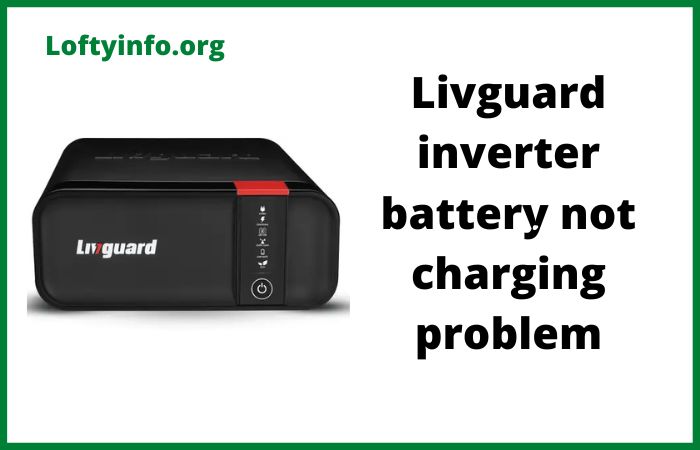Luminous Inverter Low Battery Problem: Complete Guide to Causes, Troubleshooting and Solutions
Luminous inverters are widely trusted for providing reliable backup power during outages. However, one of the most frustrating issues users encounter is the persistent “low battery” warning, even when the battery appears to be functioning normally.
This comprehensive guide explores the various causes behind this problem and provides practical solutions to resolve it.
Understanding the Low Battery Warning System
Luminous inverters are equipped with sophisticated monitoring systems that continuously track battery voltage, current flow and overall health.
When the system detects parameters below predetermined thresholds, it triggers the low battery alarm to protect both the inverter and battery from potential damage.
But sometimes, these warnings can be misleading due to various technical issues.
Causes Of False Low Battery Warnings In Luminous Inverter
1. Battery Terminal Corrosion and Poor Connections
One of the most common culprits behind false low battery readings is corrosion at battery terminals.
Over time, exposure to humidity and battery acid vapors creates a layer of corrosion on the positive and negative terminals.
This corrosion acts as a resistor, creating voltage drops that make the inverter’s monitoring system incorrectly interpret the battery’s actual charge level.
The corrosion typically appears as a white, green or blue powdery substance around the terminals.
Even a thin layer can significantly affect the electrical connection, causing the inverter to receive inaccurate voltage readings.
Poor terminal connections due to loose bolts or inadequate tightening can compound this problem, creating intermittent contact that confuses the inverter’s sensors.
2. Battery Aging and Capacity Degradation
Lead-acid batteries, commonly used with Luminous inverters, naturally lose capacity over time through a process called sulfation.
As batteries age, their ability to hold and deliver charge diminishes significantly.
A battery that originally provided 150Ah capacity might only deliver 80-90Ah after 3-4 years of regular use.
This capacity reduction means the battery reaches its actual low voltage threshold much sooner than expected.
The inverter’s monitoring system, calibrated for a new battery’s performance characteristics, continues to expect the original capacity levels.
When the aged battery cannot meet these expectations, it triggers the low battery warning even though the battery is operating within its current, reduced capacity limits.
3. Faulty Battery Voltage Sensing Circuit
The inverter’s voltage sensing circuit is responsible for accurately measuring the battery’s voltage levels.
This circuit contains precision resistors, operational amplifiers, and analog-to-digital converters that can develop faults over time.
Component aging, moisture ingress or electrical surges can cause these circuits to provide incorrect readings to the main controller.
When the sensing circuit malfunctions, it might consistently read voltage levels lower than the actual battery voltage.
This creates a scenario where a fully charged battery appears depleted to the inverter’s control system.
The problem can be intermittent initially but typically becomes more consistent as the faulty components continue to deteriorate.
4. Incorrect Battery Type Configuration
Luminous inverters often support multiple battery types including tubular, flat plate and gel batteries.
Each battery type has different charging profiles, voltage characteristics and discharge patterns.
If the inverter is configured for the wrong battery type, its monitoring algorithms will use incorrect parameters to assess battery status.
For example, if the inverter is set for tubular batteries but connected to gel batteries, the voltage thresholds for low battery warnings will be mismatched.
Gel batteries have different voltage characteristics during discharge compared to tubular batteries.
This mismatch causes the inverter to interpret normal gel battery voltage levels as low battery conditions, triggering false alarms.
5. Ambient Temperature Effects on Battery Performance
Temperature significantly affects battery performance and voltage characteristics.
Lead-acid batteries lose approximately 50% of their capacity at 0°C compared to their rated capacity at 25°C.
In extremely hot conditions above 40°C, batteries may also show reduced effective capacity due to increased internal resistance and electrolyte evaporation.
Luminous inverters may not adequately compensate for these temperature variations in their battery monitoring algorithms.
During cold weather, the battery’s reduced capacity and lower voltage output can trigger low battery warnings even when the battery has sufficient charge for normal temperature conditions.
Similarly, high temperatures can cause voltage fluctuations that confuse the monitoring system.
6. Electrolyte Level Issues in Maintenance-Required Batteries
For maintenance-required lead-acid batteries, electrolyte levels play a crucial role in proper operation.
When electrolyte levels drop below the recommended minimum, the exposed battery plates cannot participate effectively in the chemical reactions necessary for power generation.
This reduces the battery’s effective capacity and alters its voltage characteristics.
Low electrolyte levels also increase internal resistance, causing voltage drops under load that the inverter interprets as low battery conditions.
Additionally, when electrolyte levels are uneven across cells, some cells may show significantly lower performance than others, creating voltage imbalances that trigger the inverter’s protection mechanisms.
7. Overloading and High Current Draw Scenarios
When the connected load exceeds the inverter’s optimal operating range, it draws excessive current from the battery.
This high current draw causes significant voltage drops due to the battery’s internal resistance, known as the Peukert effect.
The inverter’s monitoring system detects these voltage drops and interprets them as low battery conditions.
Overloading is particularly problematic when starting inductive loads like motors, compressors or pumps.
These devices require 3-7 times their running current during startup, creating momentary but severe voltage drops.
If the inverter’s low battery detection is too sensitive or has insufficient time delays, these temporary voltage drops can trigger false low battery alarms.
8. Calibration Drift in Control Circuits
Electronic components in the inverter’s control circuits can experience parameter drift over time due to aging, temperature cycling and component tolerances.
The reference voltages, gain settings, and threshold levels used by the battery monitoring system may gradually shift from their original calibrated values.
This calibration drift causes the inverter to incorrectly assess battery voltage levels.
A control circuit that has drifted might consistently read battery voltage as 0.5V lower than actual, causing premature low battery warnings.
The drift typically occurs slowly over months or years, making it difficult to identify without proper diagnostic equipment.
Impact on System Performance
These false low battery warnings don’t just create nuisance alarms; they can significantly impact system performance.
The inverter may prematurely switch to mains power, reducing backup time during actual power outages.
In some cases, the inverter might refuse to switch to battery mode entirely, defeating the purpose of having backup power.
Constant low battery warnings can lead to user frustration and unnecessary service calls, increasing maintenance costs and system downtime.
Prevention and Maintenance Tips
Regular maintenance is crucial for preventing false low battery warnings.
Clean battery terminals monthly, check electrolyte levels in maintenance-required batteries, and ensure proper ventilation around the battery installation.
Monitor battery performance regularly and replace aging batteries before they cause system issues.
Professional calibration of the inverter’s control circuits every 2-3 years can prevent calibration drift issues.
Proper load management and avoiding consistent overloading will also help maintain accurate battery monitoring.
Conclusion
Understanding these various causes of false low battery warnings in Luminous inverters enables users to diagnose and address issues effectively.
While some problems require professional intervention, many can be prevented through proper maintenance and awareness of system limitations.
Regular monitoring and proactive maintenance ensure reliable inverter performance and accurate battery status reporting, providing peace of mind during power outages.
By addressing these root causes systematically, users can restore their Luminous inverter’s accurate battery monitoring functionality and enjoy reliable backup power when needed most.
luminous inverter 950 common charging problems






